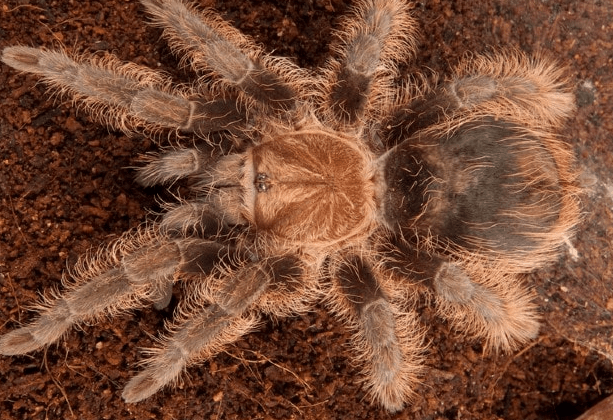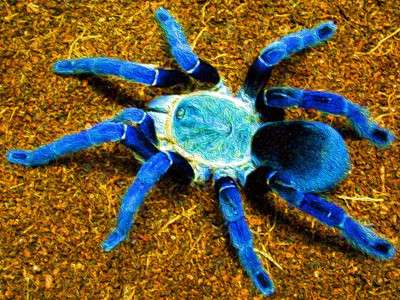
Description
The curly-haired tarantula from Honduras is a widespread species of spider. The tarantula from Honduras with curled hairs has a plump body covered in dark hairs; the bronze sheen you notice is caused by some longer golden hairs. The tarantula is aware of its environment because to these sensitive hairs that pick up air vibrations.
Geographical Distribution
Central American countries with curly hair tarantulas include Honduras, Nicaragua, and Costa Rica.
Behavior
These tarantulas have a reputation for being undemanding, especially after reaching adulthood. Although young tarantulas are first a little more wary of you and inclined to hide, they will soon warm up to you and allow you to observe them.
However, as they are extremely easily startled, you shouldn’t make any unexpected movements around them. If you do handle them, keep your cool and move slowly because if you drop them, they could die and their hairs could irritate your skin.
Although they don’t often bite, if they feel the need to defend themselves, they will. Like a wasp or bee sting, most people merely experience pain and little swelling. However, some people are allergic, so if you experience breathing difficulties after being bitten, contact a doctor right once.

Care as Pet
Tank
These tarantulas require a tank that is at least 5 gallons in size, but 10 gallons is ideal. It must be at least three times the spider’s body width wide. These spiders enjoy digging, therefore the tank needs to be rather deep because they typically require at least 3 inches of substrate.
Since they don’t climb much, there isn’t a huge requirement to utilize vertical space. Accordingly, you don’t need to put up any decorations for them to climb, although they will love having hollow logs or other similar objects around for hiding.
Temperature and Humidity
The tank should always be maintained between 75°F and 80°F. The enclosure should be maintained out of direct sunlight, so you should use a heating pad or other artificial means to reach those temperatures.
Humidity levels are additionally significant. Aim for 65 to 70% humidity, and if the tank begins to feel a little dry, spritz everything down with a spray bottle. However, avoid spraying the spider because this can annoy it and make it try to escape the cage.
But be careful—all that moisture might encourage the formation of mould. Replace all the bedding and clean the tank right away if you notice any mould or mildew within. Don’t use any cleaning products that could harm your spider, and be sure to clean any decorations as well.
Food and Water
Crickets, roaches, and mealworms are likely to be the simplest prey for you to find because these spiders primarily consume insects. Make sure that any insects you give these tarantulas have been gut-loaded, which means that they have received nutrients that are vital for the spider’s health.
While fully-mature spiders should only be fed once a week, young tarantulas should be fed every two days or so. You should only feed them during the evening hours because they like to hunt at night.
If there isn’t enough substrate to dig into, tarantulas may not feed since they prefer to wait in their burrows and attack their prey from there. You may throw a few insects in there at once without worrying about overfeeding them because they’ll stop eating when they’re satisfied. After 24 hours, make sure to throw away any uneaten food because insects can contaminate the tank and even hurt the tarantula.
The majority of the moisture that these spiders require comes from their food, but it’s still a good idea to have a shallow water dish nearby. Regularly change the water, and make sure your spider can escape if it falls in.
Table





